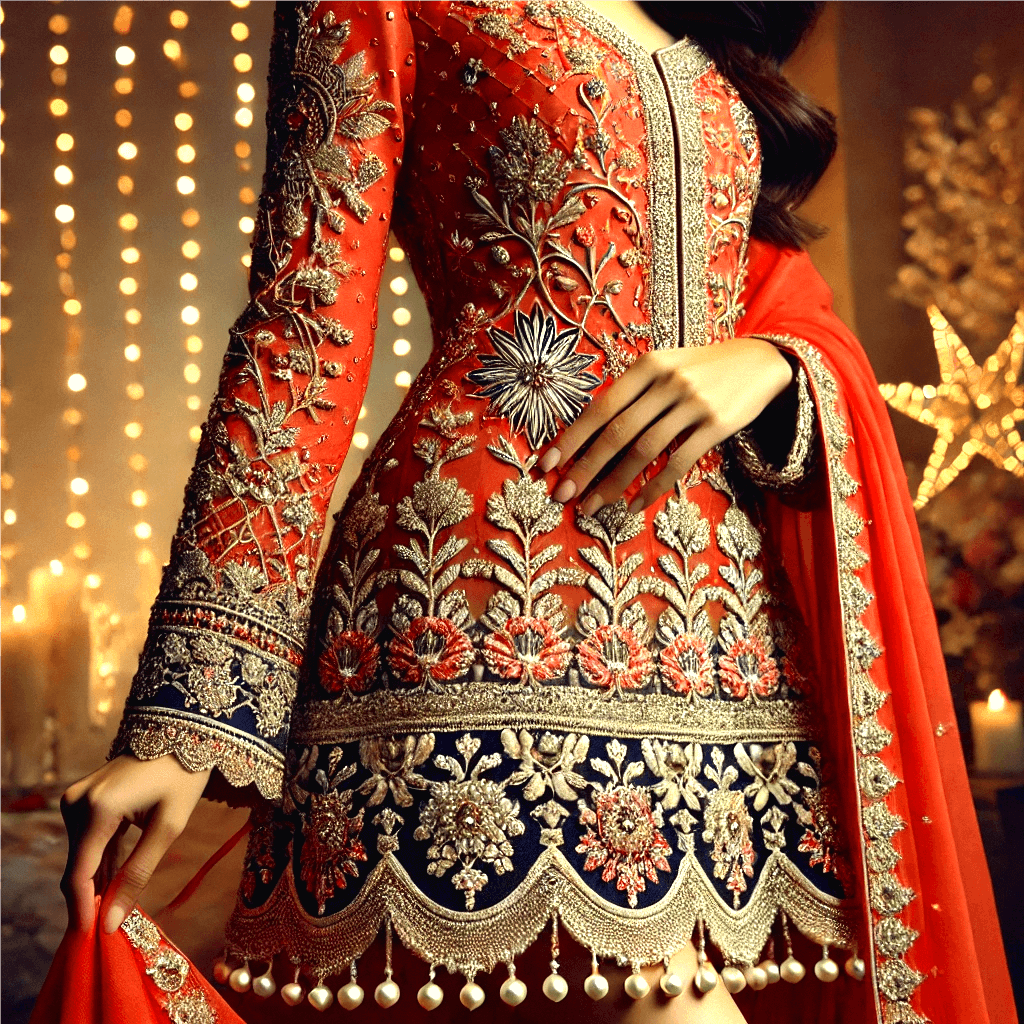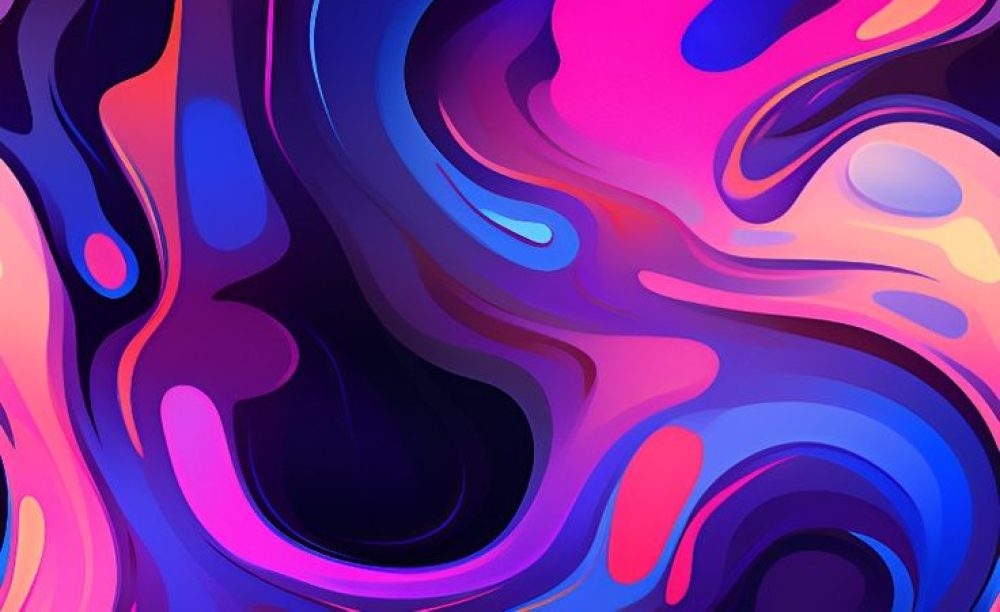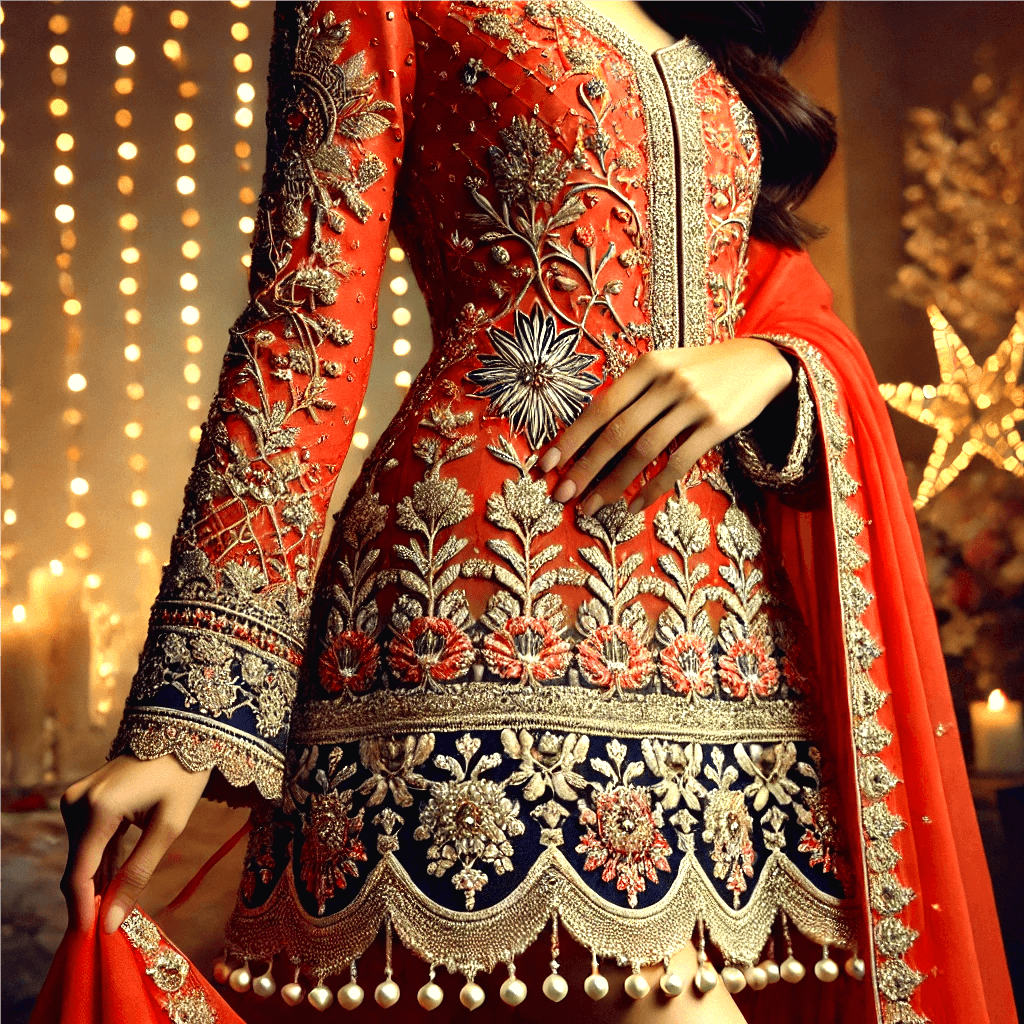Table of Contents
The world of fashion is continuously evolving however, there are some fashion trends that never seem to cease to exist. One such trend in South Asian fashion is the daman which refers to the embroidery on the lower part of skirts or dresses like kurtis, kameez or lehengas. The Daman is a minute but powerful element to clothes because it adds fashionable details and exudes grace. It can be set off with elaborate embroidery, bare minimum beadwork, or even mirror work: the daman trend shows how one single piece of jewelry can create so much elegance. In this article, we will highlight some of the modern fashion trends in damans that have added a contemporary twist to traditional fashion.
What does Daman mean?
The term ‘Daman’ is used when referring to an embroidery or ornament that is found at the lower end of a dress. It is used in the south east Asian traditional dresses like kurtis, kameez, sarees, and lehengas. Such fabrics may have simple floral patterns or more complex embellishments Depending on the garments designed. This decoration may consist of stitch work, beads, or lace, which is frequently the centerpiece of the garment and is pleasing to the eye. The daman serves both as a decoration and a sign for the deep craftsmanship and the culture from which the people come from.
Types of Daman Decorations that are Commonly Used
The art of designing the daman is a unique form of art and has a wide scope as each region in South Asia has its own characteristics. So, let us explore some popular styles of daman decoration.
Moti Daman is a dainty looking decorative technique where small bead shaped objects ‘moti’ are stitched to the edges of daman work and then sewn onto the borders of the placket. These beads are usually gold, silver or pearl in color and make the garment look very expensive. Moti Daman is also popular for adding a graceful touch to sarees, dupattas and kurtis. This decorative technique is ideal for semi-formal events and can be paired with traditional attire like wedding sarees to give a royal look to the bride.
Gota Daman is a widely used form of daman work which is also referred to as ‘gota daman’ where the embroidery is done with gold or silver threads. These threads have a shiny appearance and thus make the garment look more appealing. Gota work are most common in the embroidery of festive clothing such as lehengas, sarees and anarkalis in the Indian states of Rajasthan and Gujarat. Daman borders are usually adorned with gota work to make the garments more attractive for traditional events like wedding, religious rituals and other celebrations.
Katchi Daman (Mirror Work)
Known for its intricate design and use of mirrors, Kutch in the state of Gujarat boasts a special Kutch embroidery called Katchi Daman. Multi colored threads are carefully stitched into the edges of a fabric where an embroidery is sewn in the middle which shines when light touches it, creating beautiful patterns. This type of embroidery is typically worn on a regional dress like bandhej sarees or kutch lehengas at weddings and festivals. Despite being a khegar, using mirrors does give a modern festive feeling to the outfit, which is greatly appreciated and a perfectly elegant compliment to the woven fabric.
Abhla Daman (Glasswork Embellishment)
Another technique of sewing glasswork crashing into the world of fashion is abhla daman where minute pieces of glass reflective shards are sewn onto the fabric. On 13th January every year, Lohri, the Punjabi festival is celebrated, where people to gather around bonfire singing folk songs and dancing to welcome the harvest. These small glass pieces create shimmering patterns and are attached on formal attires including sarees and lehengas. The glass beads or mirror stitching done onto the fabric is what abhla performs and glasswork daman is the outcome. Such types of daman are best suited for evening parties or any occasion where one wants to shine through the light.
Stylish Fashion Trends in the Daman Region
Garment barriers are being shifted with modern designs. Many works of fashion were done for the purpose of changing the traditional beauty of daman. Mentioned below are some of the intriguing modern fashion trends in damans.
Reflections In A New Light – Mirror Work
Daman mirror work is among the new fashion trends that have gained popularity. The reflective quality and glam factor of the work has increased the demand of mirror daman work. It is embraced by modern and traditional designers alike as it is incorporated into the hemlines of kurtis, lehengas, shararas, and even casual dresses. Their mirror like quality adds grace which makes them suitable for the day time festivities and evening functions. Additionally, other techniques such as embroidery can also be incorporated with it to make the design more dimensional and beautiful.
Patterns That Are Geometric And Abstract
Daman has started concentrating on abstract patterns and geometric shapes in the new fashion collections. A variety of floral patterns still dominate many designers, but instead are beginning to incorporate contemporary designs into the hemline decoration using bold geometry. Stripes, circles, and diamond shapes are adding to the traditional garments a touch of modernity. This trend combines with la crosse structural adds a chic touch to kurtis and kameezes that are perfect for women seeking to blend fashion and culture.
Border and Lace Details
Over the last couple of years, lace has often been of primary focus in new daman designs. The lacework one the hemlines or the borders of the kurtis, lehengas, kameez is added with the hopes of enhancing the overall beautification of the pieces. The stunning intricacies of lace adds a touch of romance and femininity that is perfect for wedding, garden parties, and fancy affairs. It is not just the beauty of the daman which makes the difference, lace can also be combined with beads or metallic baby threads and it becomes an entirely different piece. There is a subtle beauty in the contrast between daman and metallic that brings lacework to life, and together they shine.
Eco-Friendly and Sustainable Daman Embellishment
However, with the growth of s, a number of designers simply are trying to be more conscious of the materials used within the fashion realm and thus there is some hope in how sustainable materials are becoming a source for daman. The use of recycled beads, organic cotton threads, and natural dyes seems to be growing in the traditional garment industry with every passing day. It goes without saying, but people looking for more eco friendly forms of daman styles are on the rise making it evident that there is a growing culture of wanting to possess designer clothes, but being true to mother nature.

Conclusion
From the analysis, the daman style takes South Asian fashion to a new level of creativity and skill. For such a simple garment, there are numerous variations in beadwork style embroidery, which seem to be the in thing at the moment, or mirror work that makes it more interesting. One thing for certain, daman is here to stay because it is a blend of the old and new. Traditional festive wear or modern outfits, there is certainly a daman style that exists for every occasion. This permanent style also shows how sometimes, all it takes is proper finishing of a garment’s hemline, and the purpose of influence can be achieved.
If you are interested for more: Understanding the Union Budget Time 2025: An Event of Unique Importance in India Daman fashion trends 2025: A touch of Elegance with Decorative Daman Trends




